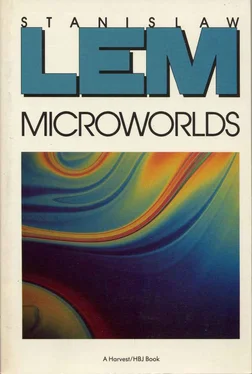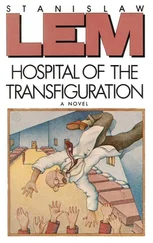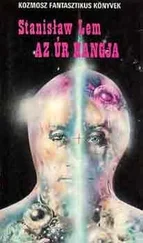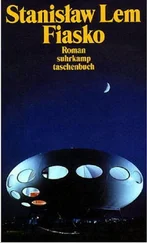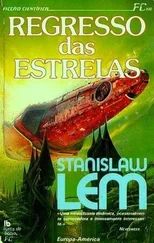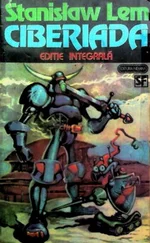Writers require the resistance of matter as they require air. In literature it is particularly meaningless to storm gates that are standing wide open. When the solid foundations of the cultural norms began to crack, then crumble, literature tried to establish for itself a special autarchy and self-sufficiency, but this could never be complete. Through its aesthetic means, its concrete works, literature attempts to prove what is both logically and empirically unprovable. This is the source of those polyvalent and ambiguous structures that are susceptible to divergent interpretations. Kafka’s The Castle, for example, can be read as a caricature of transcendence, a heaven maliciously dragged down to earth and mocked, or in precisely the opposite way, as the only image of transcendence accessible to a fallen humanity. In the first instance, the revelation is compromised; in the second, its earthly interpretation. Works like this do not expose those main junctures that could reveal their unambiguous ontological meanings: and the constant uncertainty this produces is the structural equivalent of the existential secret. The secret is neither explained nor given a secondary meaning. It simply remains — not merely as an enigmatic reference, but vividly displayed as a tangible presence, created by the palpable, irreducible indeterminacy of the work’s own structure. This “rock solidity” of the secret produced by the cunning structuration of the work is one possible response to the destruction of cultural norms.
The other possibility is the approach mentioned earlier: superimposition of very different structures, some of which are harmoniously striving toward the same goal, while others are in dissonance and headed toward collision. The result is a peculiar feeling of depth, since it is not always possible to determine anew which structure is fundamental and which is relative, or, rather, which is the “absolute system of relations,” and which are the variables whose values must be interpreted with reference to the system’s standards. In neither case is the guiding principle of the work arbitrary. Just as a breeder does not act blindly, fortuitously, or chaotically when he sets out to develop a superior strain from the original animal or plant prototypes, so a writer also does not act fortuitously when he cross-breeds and combines complex narrative structures in new ways. This does not mean that such a writer makes only pragmatic “improvements.” For, as a linguistic system, the literary work is often simultaneously homogeneous and disparate: it can be perfectly coherent on some levels, in certain constitutive structures, whereas on other levels it may even be internally contradictory. Moreover, it may keep some of its potential structures open — leaving, as it were, a way out for the work to transcend its own sphere, as is done in “The Monkey’s Paw,” for example. This short story proposes an “appended transaction”: we must either accept the existence of the “ghosts,” and thus the hypothesis of transcendence, which makes the story a coherent whole, or we discard the hypothesis, and the work dissolves into a series of fortuitous, coincidental events. The acceptance of transcendence is the price one must pay for the work to be coherent.
The approach of the French antinovel has been a most interesting example of creative exploration. This exploration moved into extremely dangerous territory; for the novelists, instead of “cross-breeding” various kinds of order, reached a point where the paradigmatic forms of order and disorder collided. This is an altogether understandable approach when the author’s guiding principle is the attempt to maximize the number of semantic levels in his work. Every message loses its clarity when it is damaged, either through collision and intermingling with another message, or because it is caught up in a flood of “pure noise.” If we posit that the task of literature is not ever to give a definitive explanation of what it presents, and is therefore to affirm the autonomy of certain enigmas rather than to enter into explanations, then the most enigmatic of possible secrets is a purely random series. Every code that holds a hidden message has some key that will open it and decipher it, except pure chance, which is not a mask that can be ripped away, and thus will always resist every attempt at a definitive understanding. There is an unintentional trap in this situation, however. Every chance situation can be transformed into a nonrandom system if one employs adequate supplementary hypotheses. For instance, one can state that the Scandinavian peninsula resembles the outlines of a seal not because of chance geographical occurrences, but because of intentional actions (i.e., God Himself willed it so when He created heaven and earth). In accordance with Occam’s razor, one can designate any state to be intentional through such extraneous hypotheses, even when there is not a trace of intentionality in them.
The majority of the works of the French antinovelists are the semantic equivalents of the story of the Emperor’s new clothes, in that a certain kind of “semantic nudity” — a lack of intentionality induced by turning on the “noise generator” — is seen by its recipients as “new clothes,” or as a new type of literary narrative that is, in its own way, intelligible.
The antinovelists have employed this generator on many different levels of creative work. Nothing explains the superimposition of the following structure in The Erasers: (1) the myth of Oedipus, (2) “time loops,” (3) the detective story. If we must, we can deduce the detective story from the myth, or the time loops from the investigation. But we cannot explain without contradiction the meanings of the whole triadic structure, unless we invoke an elaborate edifice of additional tortuous and arbitrary interpretations. In The Erasers, the heterogeneous narrative structures were aligned by chance. In another of Robbe-Grillet’s works, La Maison de rendez-vous, the principle of chance operates in the fragmentation and gradual recombination of the plot, and the method of fragmentation is also random. (Thus, in The Erasers, the chance generator operates on the fundamental level, the level of total structure, whereas in La Maison de rendez-vous, it operates on the subordinate ones.)
From the reader’s point of view, Kafka’s method (endowing the total structure of the work with a multidimensional “indeterminacy”) and that of the antinovelists (depriving the work of clarity of meaning through quasi-accidental interventions to produce obscurity) have similar semantic results. The reader, in the activity of reading, reconstructs the work in a way that explains it, and invests its partially random qualities with order. The only problem is that such works, like the ink blots of a Rorschach test, have no “true” interpretations. This state of affairs favors the writer, since the broader a work’s field of cultural references, the better it defends itself against devaluation. Any work that extends deep roots through its semantic references can serve to integrate the culture in which it originates. But the practical problem remains of convincing the reader to make the necessary interpretative effort, to integrate through hidden cultural references something that appears, at first sight, impossible to integrate, because it is a product of chance. Readers must be persuaded that there is a real need for their efforts, and the author is aided in this by zealous and resourceful critics who become the veritable coauthors of such emphatically indeterminate texts (which is probably why these texts hold such an attraction for many of them).
The difference between the works constituting multi-structured sandwiches and the works that represent “noise-damaged” messages is the same as that between the information of an authoritative palimpsest and a pseudo palimpsest in which the work of monks illustrating a manuscript is interlayered with that of houseflies making their own “corrections.” It goes without saying that the use of the noise generator as a creative device is not a trick, since cultural consensus approves of chance in the creative process (this fact is self-evident in the fine arts, and can be seen in such extravagant methods as pitching fistfuls of paint at the canvas, or tracking shoe soles dipped in paint across it, and so forth). It is another matter that these works are essentially mechanisms for the creation of semantic mirages, even when they give an impression of semantic richness; to search for their inherent significance is akin to searching for the objective correlation between the delusions and nightmares of the hallucinating mind. If the organizing principle of the work is chance, it cannot also be intentional at the same time. This means that intentionality is displaced onto another, more inclusive level of the work, since the choice to use chance as a creative technique is itself not a product of chance at all. It is the result of calculation or conscious intention — a calculation sanctioned by game theory, which tells us that if one player makes a random move, his partners must also resort to a random strategy. And this is where the anti-novel defeats us, because as readers we cannot justify chance strategies of reception, because that would mean the dissolution of articulation.
Читать дальше
